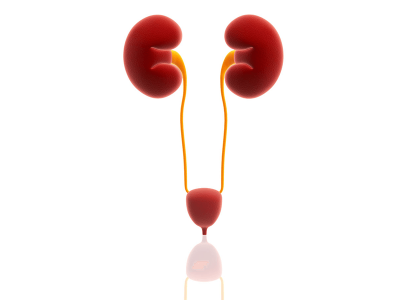Tuberculosis is a bacterial infection caused by mycobacterium tuberculosis bacilli. These bacteria can enter the lungs through air. If the resistance offered by the body’s immune system is ineffective, then the bacteria can grow and settle in the lungs. They can also spread through the blood stream and settle and develop lesions in any part of the body. Tuberculosis, though common in the lungs, can affect almost any part of the body. In the urinary tract, infection starts in the kidney. From there, it can spread to the ureter and the urinary bladder.

There are 9.1 million cases globally out of which 1.9 million are in India.
Urinary TB is common between the age group of 20 to 40 years. There is a slightly increased preponderance in women. It is also common among patients who suffer from immune deficiency syndrome, diabetes and in the poorly nourished.
Tuberculosis bacteria causes destruction of renal tissue resulting in ulceration and formation of granulomas. It initially affects the calyces and then spreads to other parts like renal parenchyma & renal pelvis. The ulceration ultimately heals by fibrosis which can in turn result in a narrowing called a stricture. It can affect urine drainage from the kidney at various levels such as at the level of calyces (hydrocalyx), narrowing at the kidney outlet (pelviureteric junction obstruction) and narrowing of ureteric lumen (uretericstructure). Kidney function can be lost gradually due to narrowing of the drainage system. If the infection occurs within the obstructed system (pylonephrosis), then kidney loses its function more rapidly.
When the infection involves the bladder, it can cause ulceration of lining mucosa causing considerable pain during urination.
Ultimately bladder can shrink in capacity due to fibrosis and can result in frequent urination.
It can affect the epididymis (located like a cap over the upper part of testis) and less commonly, the testis itself. Involvement of prostate and penis are very rare.
Increased frequency of urination and painful and urgent urination are the symptoms. Urination could be as frequent as every 20 minutes reducing the quality of life. Loin pain, fever, lower abdominal pain and blood in the urine are some of the other symptoms.
Pain in the scrotum and swelling of the epididymis usually suggests genital involvement. Decreased urine flow and fever are suggestive of involvement of prostate due to tuberculosis.
Clinical symptoms are usually vague, high index of suspicion is important to make early diagnosis.
Important tests that clinch the diagnosis are presence of pus cells in the urine, absence of bacterial growth (sterile pyuria) and presence of TB bacteria on smear testing.
Urine for geneXpert and CT scan can further help in the diagnosis.
Cystoscopy can show presence of ulcers in the early stage of the disease and reduced bladder capacity in the advanced stage. Taking a sample of the ulcerated area (biopsy) will show presence of granuloma which is typical of tuberculosis.
Loss of kidney function due to obstruction of urine drainage, infection and total renal parenchymal destruction
Chemotherapy with anti-tuberculosis drugs is the main stay of treatment.
It should be given for a sufficient period of time, usually 6 to 9 months. Drug therapy should be taken regularly and good follow up is essential.
Is surgery required in the treatment of tuberculosis?
Surgery will be required to remove blockage of urinary drainage at various levels. Rarely, removal of the kidney is advised but only if the kidney is totally destroyed.
If the bladder has shrunk, its capacity can be improved by using bowel segments.
Do not ignore the urinary symptoms.
Take medication as advised and have regular follow up.
Genito urinary tuberculosis can be well treated with good outcome.
Article by Dr. Anandan Nagalingam Consultant Senior Urologist and & Andrologist
© Copyright 2024 | Powered By Tech Thulasii